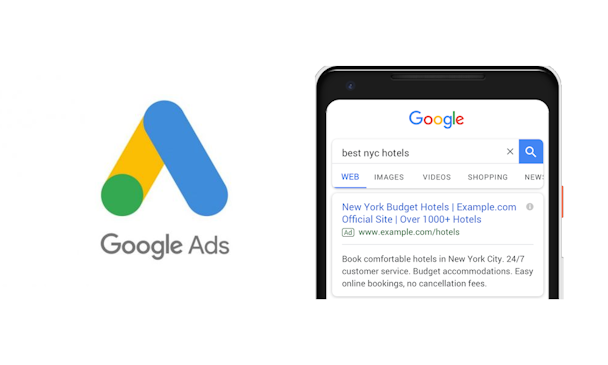Should you be using Responsive Search Ads?
With the shift from standard text ads to expanded text years in 2016, Google gave advertisers what they wanted: more lenient character restrictions, more ad elements, and the freedom to A/B test the new versus the old. They did not need to persuade savvy digital marketeers to adopt the format; the performance metrics were superior and gave them more creative freedom.

Now in 2019, Google is releasing responsive search ads, again with more ad elements and a higher total character limit. However, the new ad format also takes some ad testing control away from the advertiser, placing it firmly in Google’s own hands. Moreover, early anecdotal results appear to be inconclusive and muddled, not helped by Google’s reluctance to comparing Expanded Text Ads (ETAs) against Responsive Search Ads (RSAs) using traditional Click-Through-Rates (CTRs) and Conversion Rate (CVR) metrics. So, should you get ahead of the curve and trial this ad format, or wait it out?
First impressions
At a glance, the new proposition is enticing: more generous character limits allow more room to communicate relevant information, slogans, call to actions, inventory, pricing, incentives and more.
By supplying a maximum of 15 headlines and 4 descriptions per RSA, the breakdown of unique RSA combinations look as follows:
Combinations without repetition (n=19, r=5)
Using Items: h1,h2,h3,h4,h5,h6,h7,h8,h9,h10,h11,h12,h13,h14,h15,d1,d2,d3,d4
Using Rule: has 3 of h1,h2,h3,h4,h5,h6,h7,h8,h9,h10,h11,h12,h13,h14,h15
Using Rule: has 2 of d1,d2,d3,d4
Based on the above conditions, Google’s machine learning can test a maximum of 2,730 unique combinations per RSA. Of course, the success of the algorithmic optimisation will be determined by the volume of data in your respective account, but it cannot be denied that it is an impressive potential combination amount.
With Google’s steady shift towards machine learning and smart bidding, the release of responsive search ads feels like a natural progression. It gives Google more ability to algorithmically find patterns in the increased number of combinations of the ad format, which should eventually improve clickthrough rates top line, compared to ETAs (although Google insists not to judge RSAs on this metric).
The predicted clickthrough rate uplift, together with the promised 10% click uplift (via broader exposure to search queries) mean Google is ultimately generating more ad revenue. The latter is also compounded by the larger size of RSAs. Less advertisers will be able to show above the fold at the same time, particularly on mobile devices, and thus aggressive top of page bidding will become even more vital than in the past.
Easy does it
With the ad format still in beta, Google is reluctant to advocate a straight swap from Expanded Text Ads to RSAs. Currently, Google has recommended adding two ETAs and a single RSA per ad group as best practice. This conservative advice is likely due to the mixed anecdotal results when comparing RSAs to the established and trusted ETA format, particularly on click through rate. In fact, Google recommends not judging RSA performance at an ad level, but rather for advertisers to look at the incrementality it provides at an ad group level, when comparing it to existing text ads. Pessimistically this may seem like Google changing the rules of their own game to suit them. However, once they find a way to solve the CTR discrepancy compared to ETAs, it will only be a matter of time before ETAs will be the dominant search ad format.
In conclusion, while it will undoubtedly be difficult to resist the adoption of RSAs in the (near) future, we have not been convinced by the initial results of the new ad format. One reason to trial RSAs currently would be If you are close to reaching a point of saturation on your current keyword coverage and want to take advantage of the projected 10% click uplift, but for other advertisers who are time-restricted (and who isn’t!), my recommendation would be to continue building upon several years of learnings from your current ETAs, at least until RSAs come out of beta.
Rowan Kleij is group account director at The Media Image
Content by The Drum Network member:

The Media Image
The Media Image (TMI) is an independent performance media agency offering a paid search- led full-service digital media solution built on the principles of people,...
Find out more
